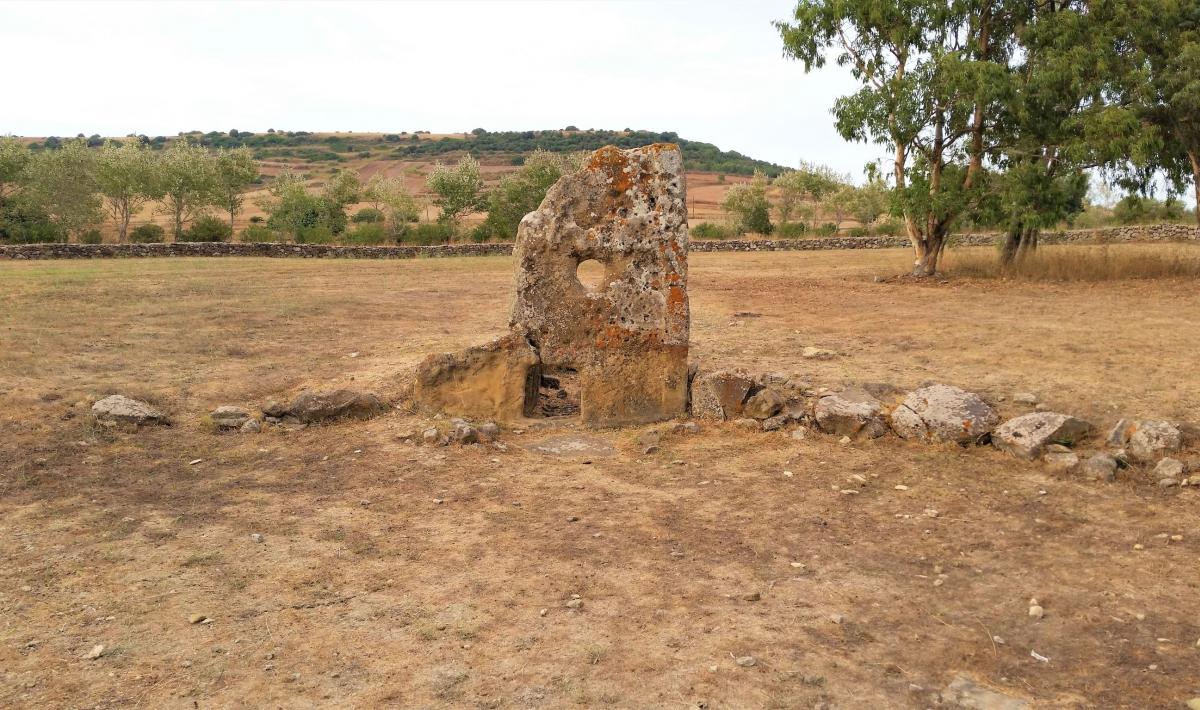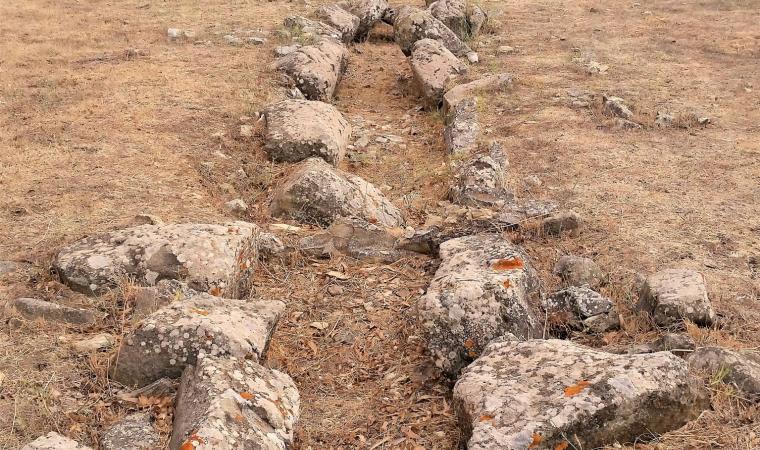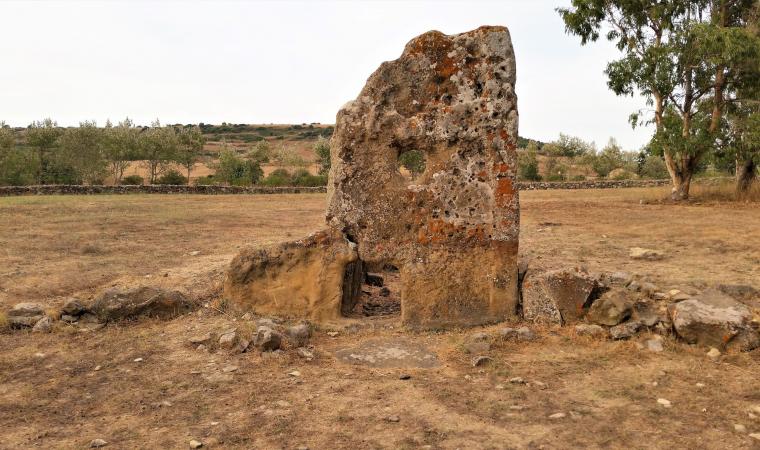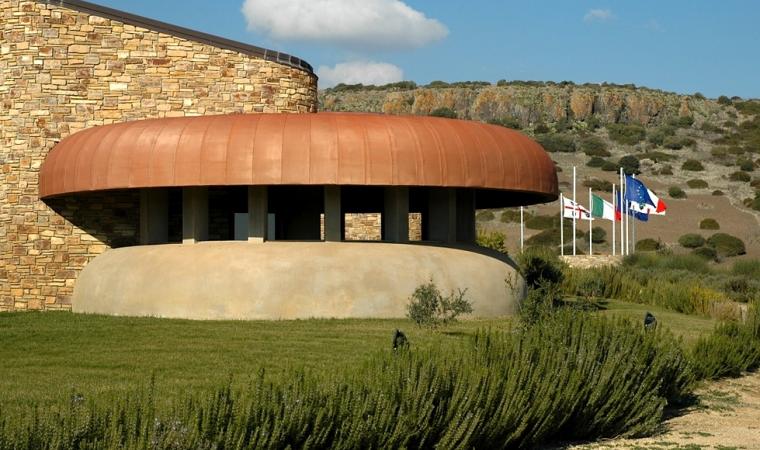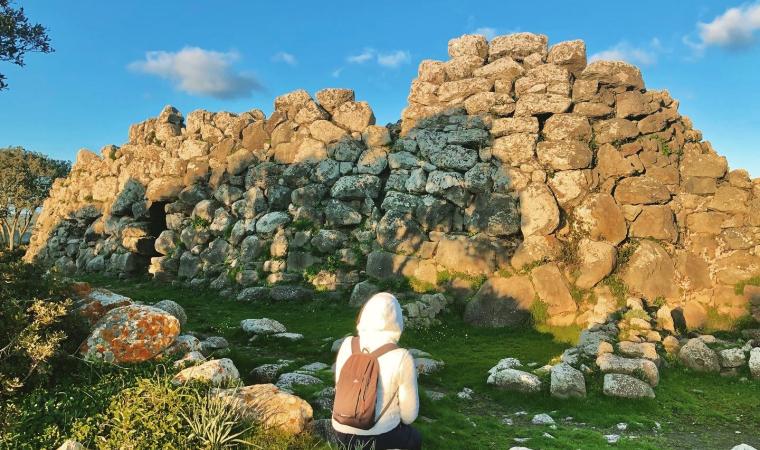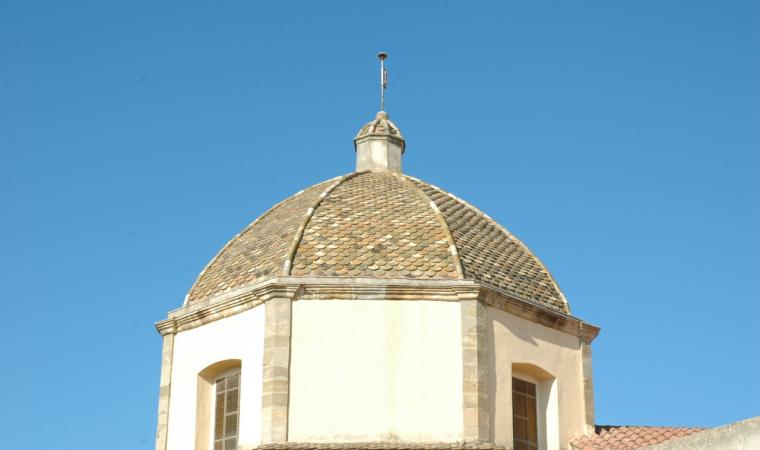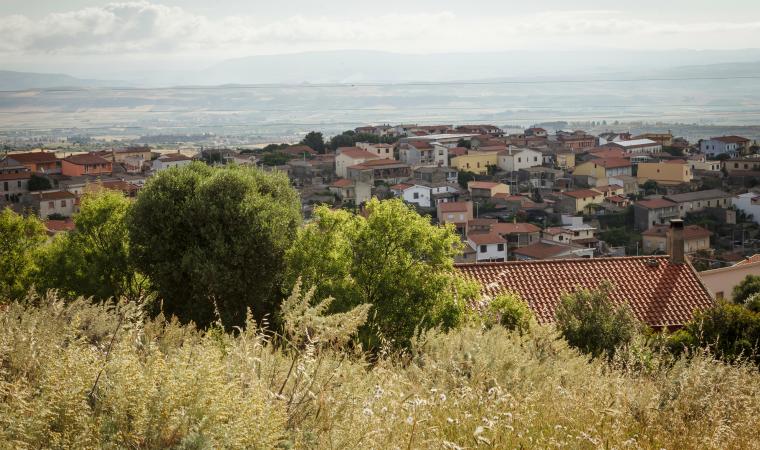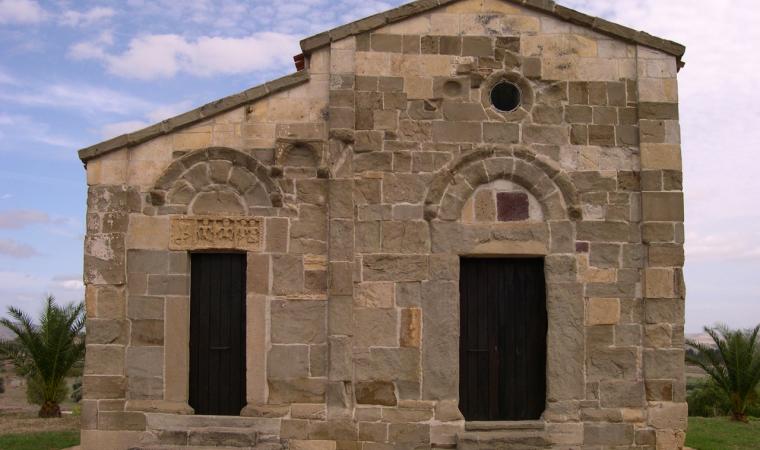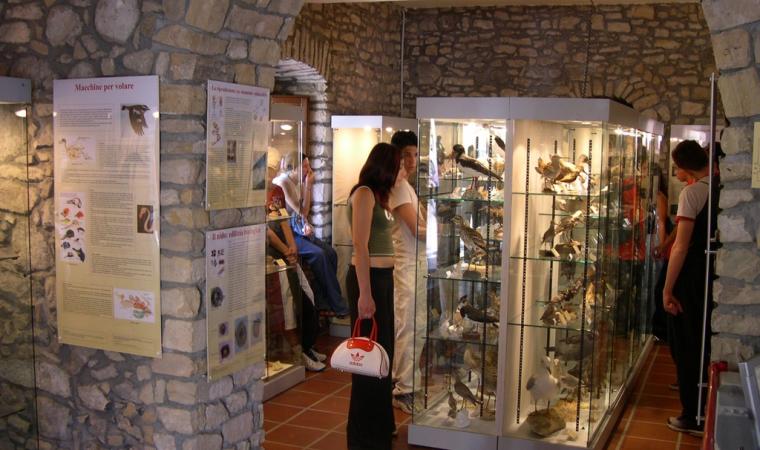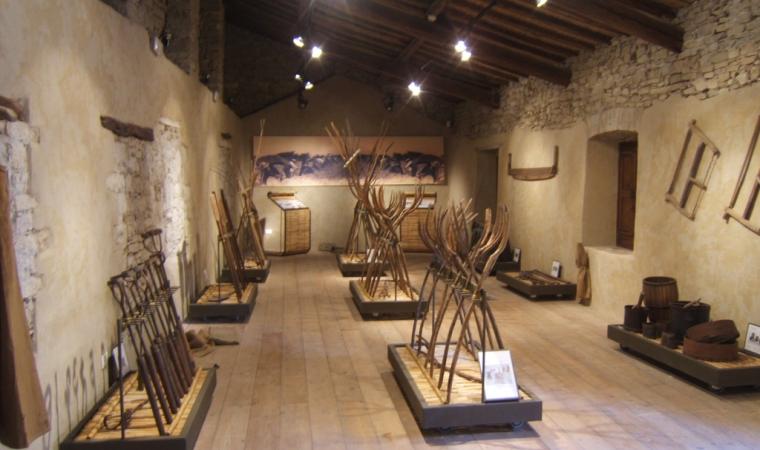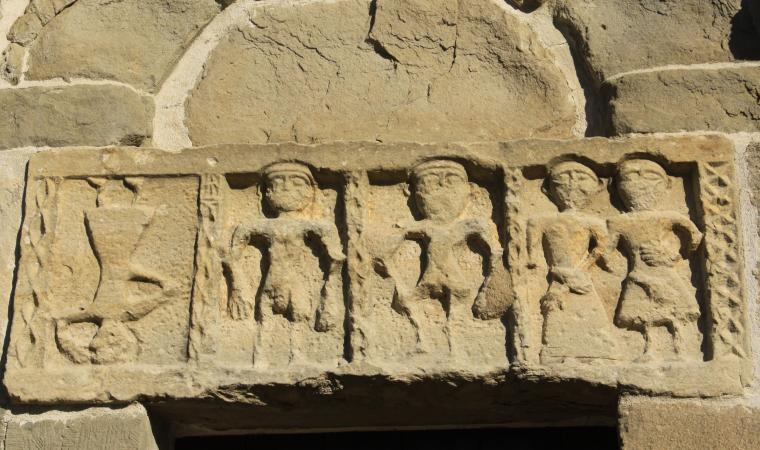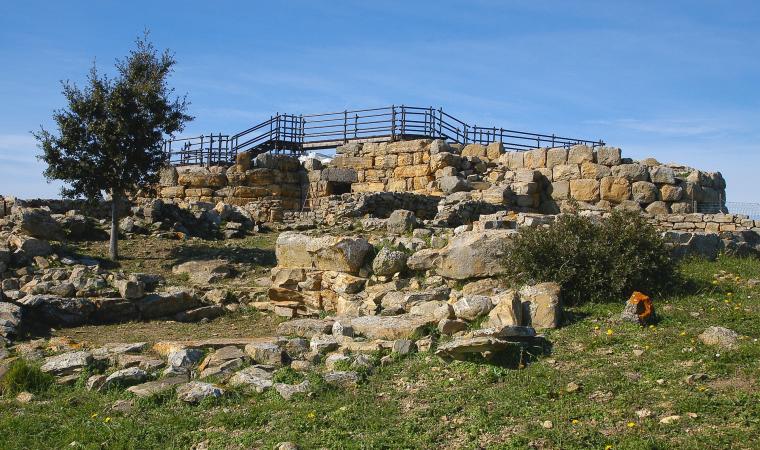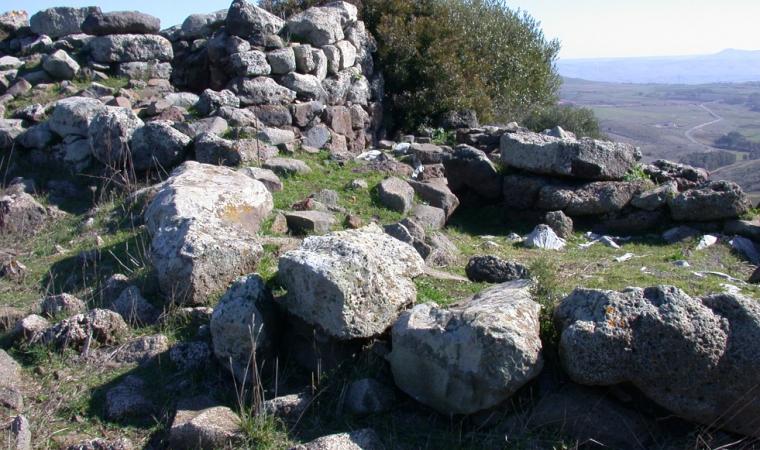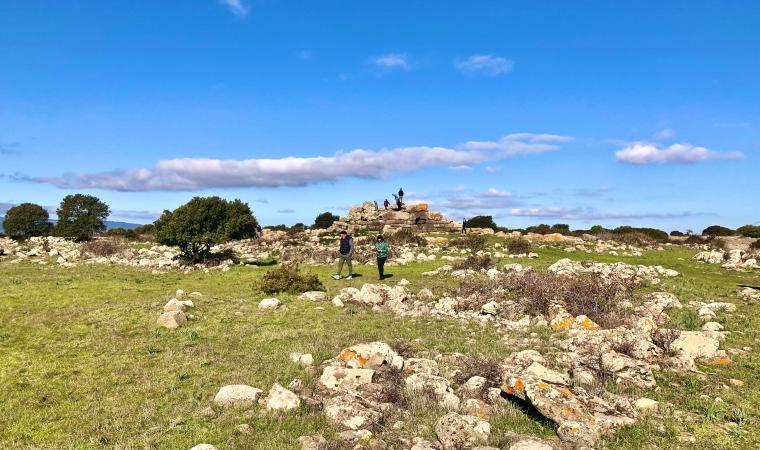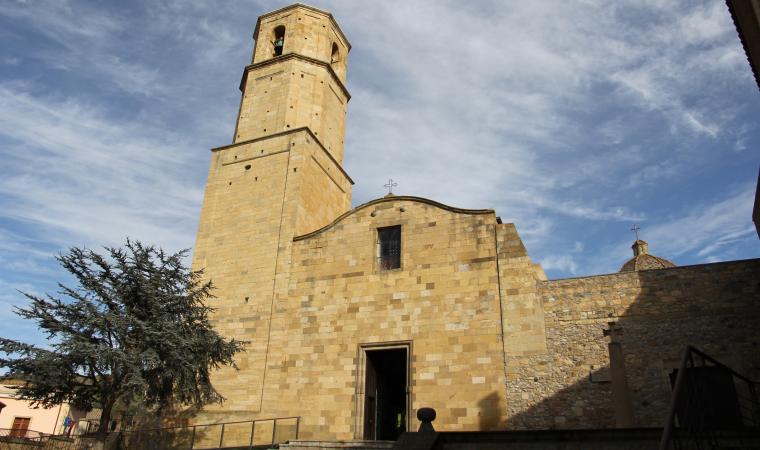It is considered the oldest Giants’ Tomb of all time and is characterised by unusual construction elements in southern Sardinia. Su Cuaddu de Nixias stands in the countryside of Lunamatrona, along the road that leads to nearby Villanovaforru, set in the enchanting hilly landscape of Marmilla, close to the Giara di Siddi. The prehistoric tomb shows distinctive traits that make it fascinating and, at the same time, mysterious. You will first be struck by the arched stele in the centre of the exedra, a central element of the Giants’ Tombs in the centre-north of the Island but rare in southern Sardinia, where the façade generally consists of rows of rock ashlars. The stele, made of a sandstone rock about three metres high with an arched shape at the top, has a front divided into three bands delimited by listels, decorated with a raised border. You will also notice an odd circular hole, created in later periods, which is where the monument gets its name: according to a popular legend, is cuaddus, the horses, used to be tied to the hole. Nixias is the name of the locality. Another unusual element is the positioning of the tomb, pointing in the ‘anomalous’ north-east/south-west direction.
Its origin is in the cultural facies of Monte Claro, around the second half of the third millennium BC. In this period, a lithic cist tomb was built, delimited by four slabs on the sides and a flat arch roof, today corresponding to the final part of the burial chamber. During the Middle Bronze Age (16th-14th century BC), a dolmen corridor chamber was built on it, made from blocks of marl laid ‘on edge’, just over ten metres long and with a monumental exedra on the façade. The slabs of the exedra are set in the ground at decreasing heights starting from the sides of the stele, forming a 14-metre arch.
There are two nuraghi not far from the burial site. For the communities that frequented them, su Cuaddu de Nixias was probably the ‘burial ground’ of reference. The closest is the single-tower nuraghe Trobas, about 500 metres from the tomb. It has an external diameter of thirteen metres and a circular chamber six metres wide, where you will notice two niches. The excavations have revealed traces of a fire, which occurred after the building had already partially collapsed and was probably why it was permanently abandoned. The second nuraghe is in an easterly direction, almost adjacent to the town of Lunamatrona, known as Pitzu Cummu. It stands on a 200-metre-high hill and has a complex structure, consisting of a central tower and four secondary towers, built with basalt blocks. Inside, there is a well with a diameter of one and a half metres; around it, along the slope of the hill, there are traces of other structures, possibly linked to the village.

